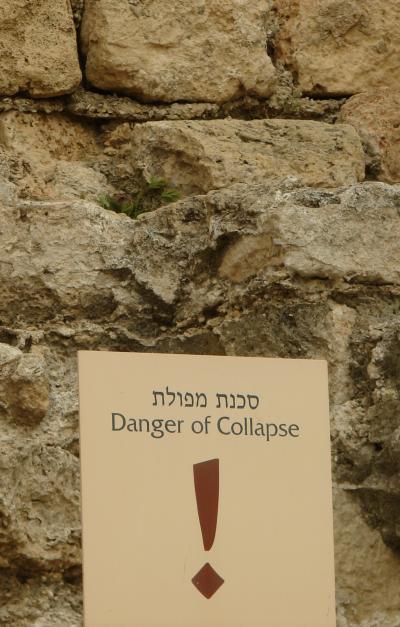 Caesarea Maritima is nothing short of awesome!
Caesarea Maritima is nothing short of awesome!
It was built by King Herod the Great in 22BC as a token of appreciation to Caesar. Archaeological excavations during the 1950s and 1960s uncovered remains from many periods, in particular, a complex of fortifications of the Crusader city and the Roman theatre. Other buildings include a temple dedicated to Caesar; a hippodrome that was rebuilt in the 2nd century as a more conventional amphitheater; the Tiberieum, which has a limestone block with a dedicatory inscription [2] that is the only secular record of Pontius Pilate; a double aqueduct that brought water from springs at the foot of Mount Carmel; a boundary wall; and, chief of all, a gigantic mole, 200 ft wide, built of stones 50 ft long. The harbor at Caesarea, 180 yd across, was then the largest harbor on the eastern Mediterranean coast. The city quickly grew to become the largest city in Judea, with an estimated population of 125,000
 |
|
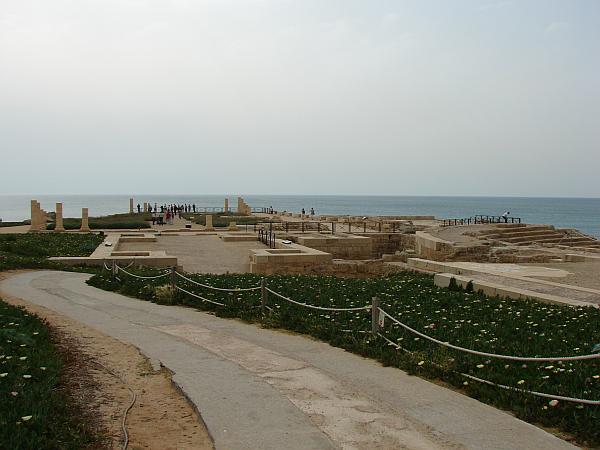 |
|
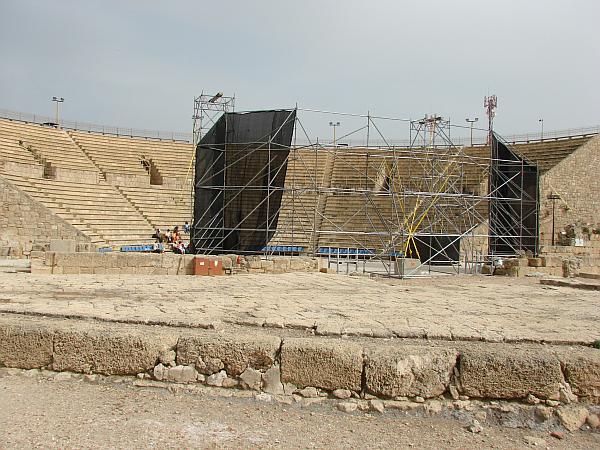 |
|
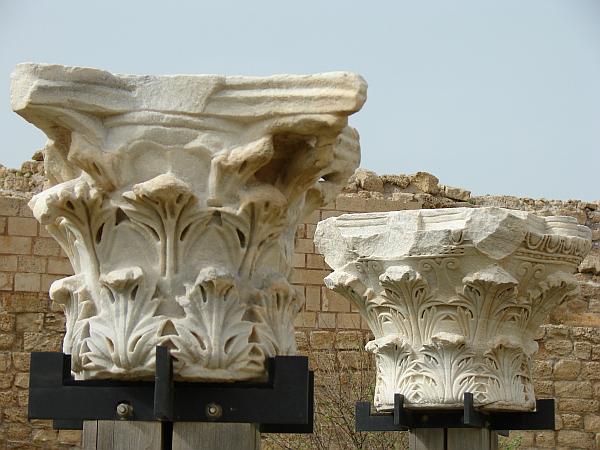 |
|
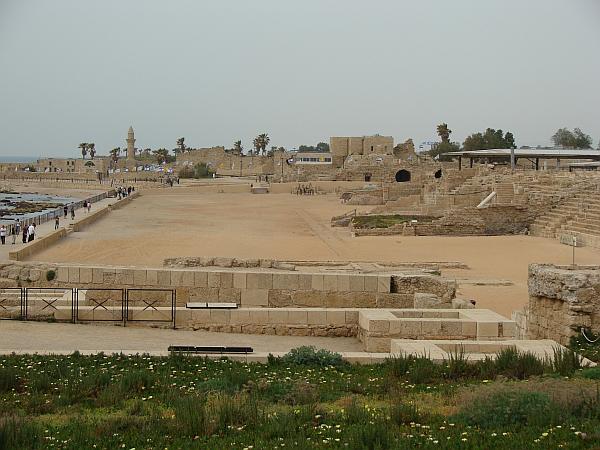 |
This photo doesn’t do the hippodrome justice. It’s huge!(For more on this, be sure to see the movie clip section) |
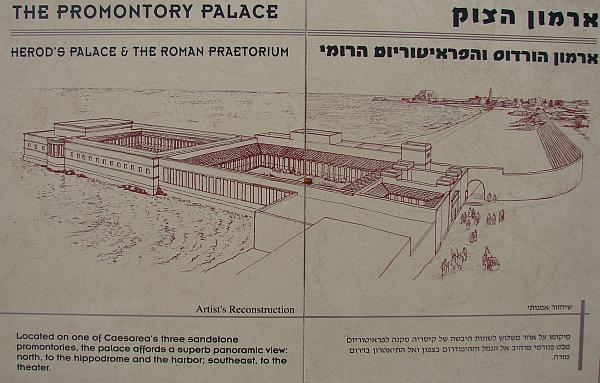 |
An artist’s conception of what Herod’s palace most likely looked like. |
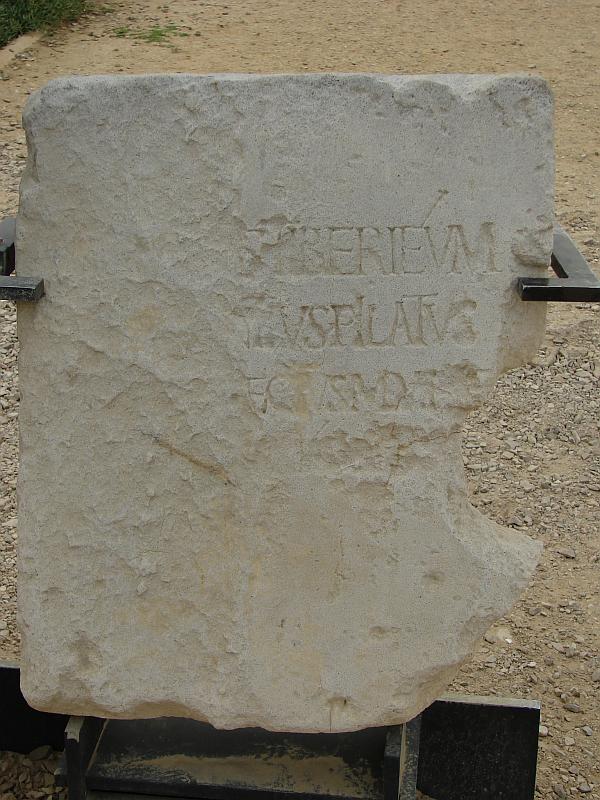 |
An inscription naming Pontius Pilate.
This is a rather important piece of archaeology as it is one of a few extra-Biblical references that prove that Pontius Pilate really did live in 1st-Century Israel. |
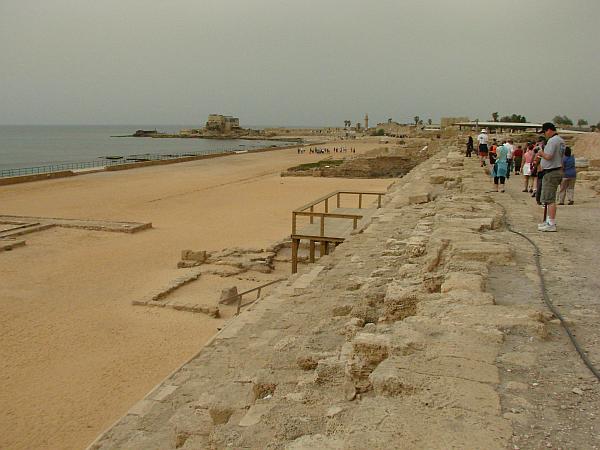 |
Remember the scene of Ben Hur in the chariot race? This hippodrome is the kind of place where that took place. |
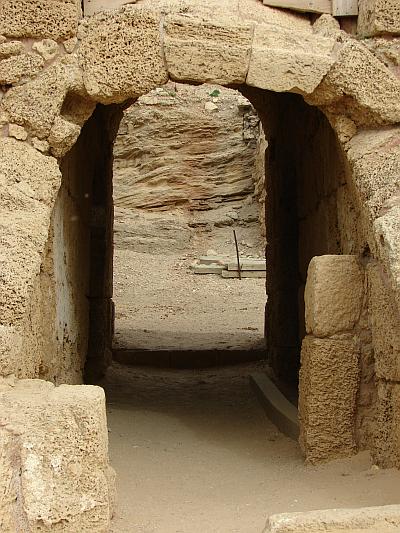 |
|
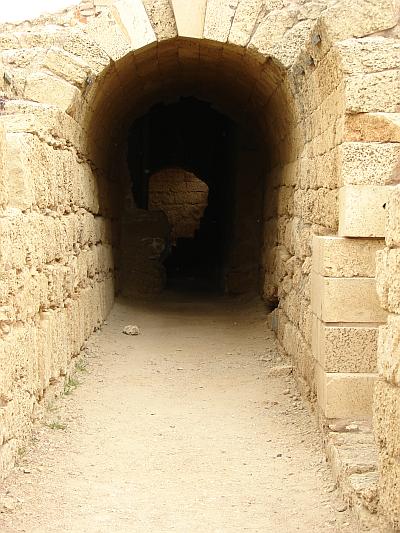 |
|
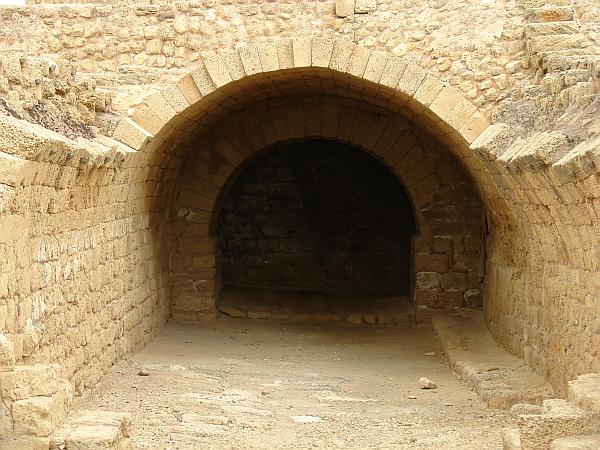 |
Thar be lions in there. I think. |
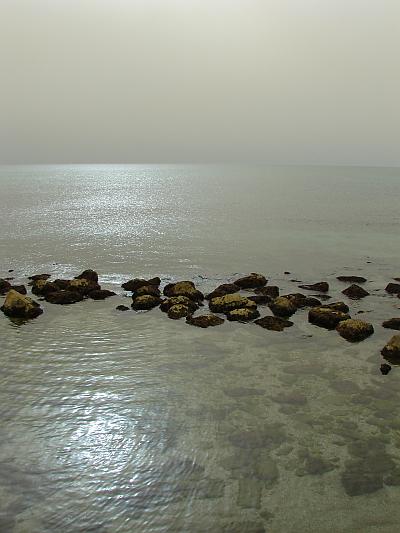 |
The Med Sea is awesome! |
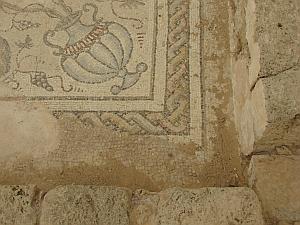 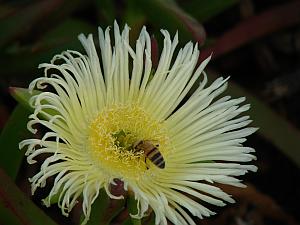 |
Tile work from Herod’s palace. Lots of pretty flowers everywhere. |
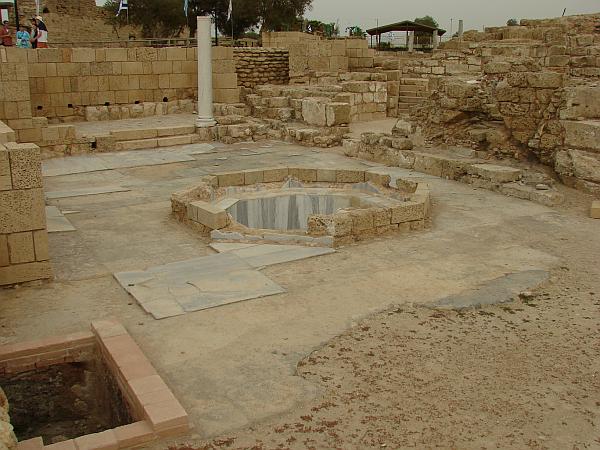 |
This is the only bathhouse remaining in the ruins of Caeserea. The stonework had marble covering it. That Herod fella was a pretty fancy dude. |
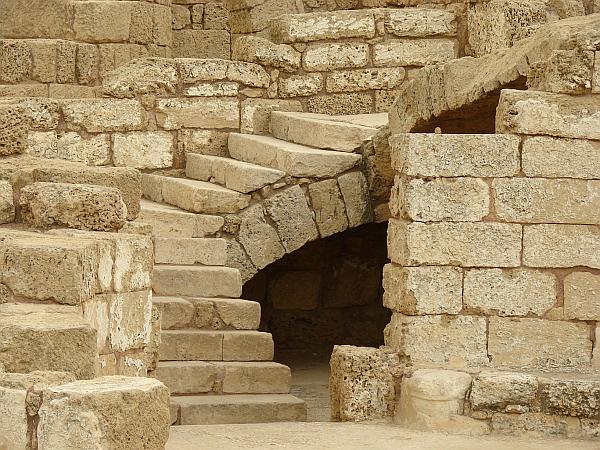 |
|
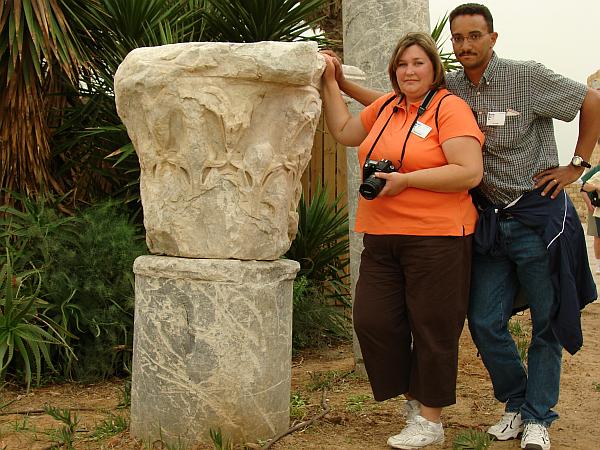 |
|
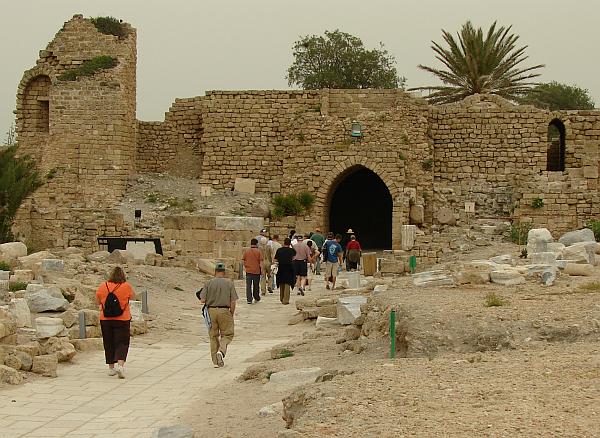 |
This is a Crusader-era gate that was built on the ruins of the north end of Caesarea. It had a sign warning of its impending collapse – yet we went in anyway. I guess it’s good thing we had insurance, eh? |
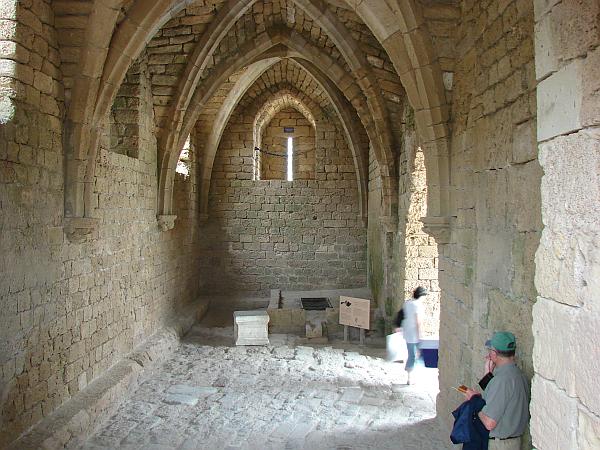 |
|
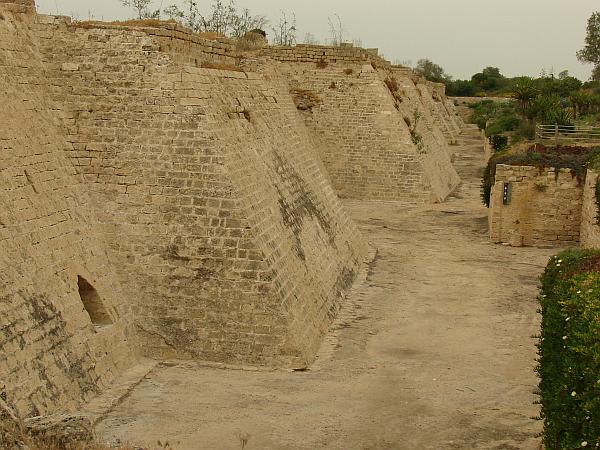 |
|
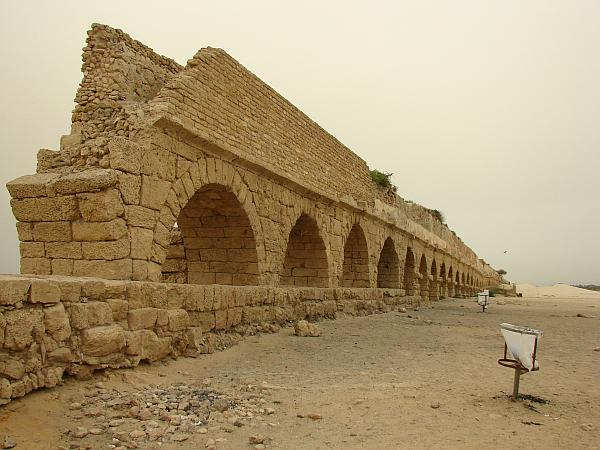 |
This aqueduct brought in water from Mt. Carmel, some 10 miles away – I think. |
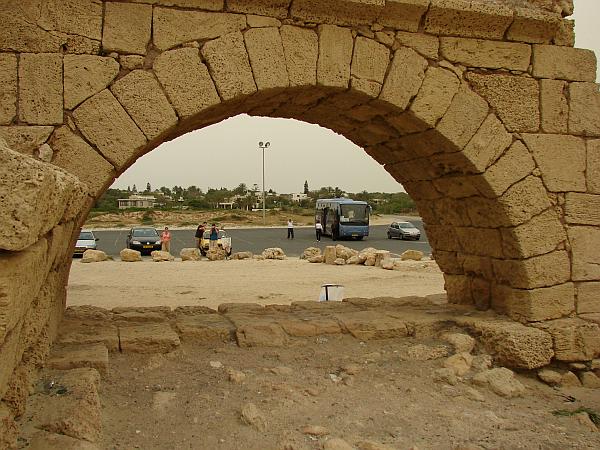 |
